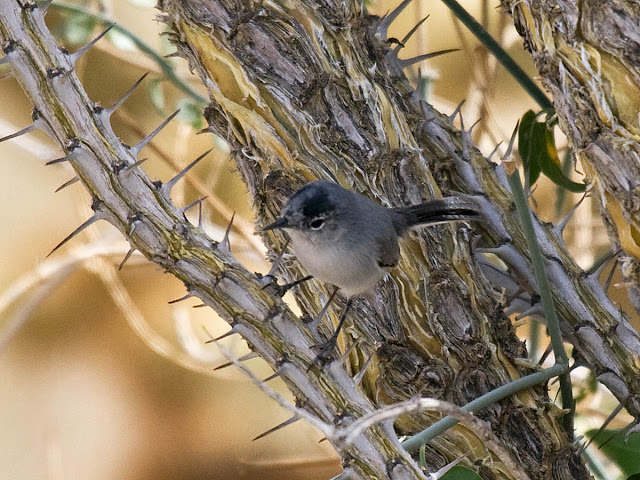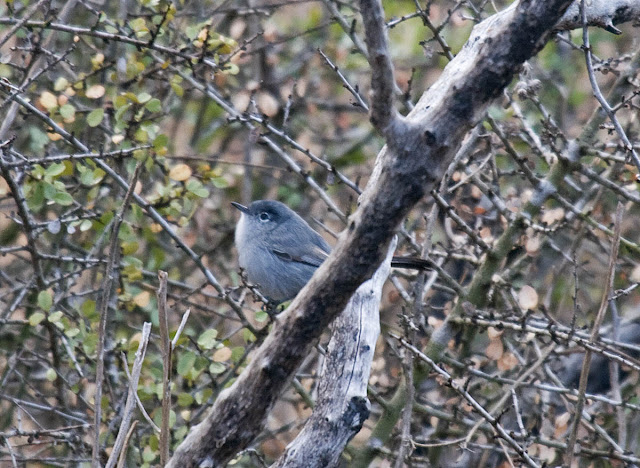 |
| Blue-gray Gnatcatcher. Escondido, California. January 1, 2014. |
Gnatcatchers as a whole tend to prefer brushy habitat, so, yes, there's always a pesky stick in front of them ruining that perfect shot!
As for identification, the Blue-gray Gnatcatcher is... wait for it... blue-gray above, almost white below. The tails on gnatcatchers are key to their ID. On Blue-gray Gnatcatchers the outer tail feathers are white. This causes the underside of the tail when held normally (not spread) to be nearly entirely white, with dark restricted to the inner underside of the tail.
The call is a soft, almost insect-like, drawn out "speee."
This species likes riparian and is often found in weedy or brushy river bottoms but also chaparral and even juniper woodlands in the West. In San Diego County they are found throughout the county, including quite near the coast, but below the mountains, and only along water courses in the eastern desert areas.
 |
| Black-tailed Gnatcatcher. Anza-Borrego Desert, California. January 26, 2014. |
In comparison to the Blue-gray Gnatcatchers, Black-tailed Gnatcatchers are darker gray, still with contrasting paler underparts. The inner and basal portions of the tail are black on the undersides, but there is a considerable amount of white in the outer portion of the end of the tail.
The call is rather harsh in comparison with Blue-gray Gnatcatcher, but not loud; it is a doubled or tripled "chee-eee."
In San Diego County Black-tailed Gnatcatchers are found in the extreme eastern portion in the Anza-Borrego desert.
 |
| California Gnatcatcher. Lake Hodges, California. February 2, 2014. |
They are rather dark gray all over, including the underparts, and the tail is nearly entirely black underneath.
One of their calls is a soft cat-like mewing. They also have a harsher call similar to Black-tailed. I've had some difficulty finding this species by voice, as House Wrens also winter commonly in coastal sage scrub and give a similar harsh call note in addition to their more familiar rattle. I've chased a lot of soft harsh calls thinking I was going to find a California Gnatcatcher and ended up with a House Wren instead.
Two locations in San Diego County where California Gnatcatchers are fairly easy to see is San Elijo Lagoon and Lake Hodges.

No comments:
Post a Comment
I really want to hear from you! I've changed settings (again) in order to try to make commenting easier without opening it up to spammers. Please note, however, that comments to posts older than 14 days will be moderated. Thank you.